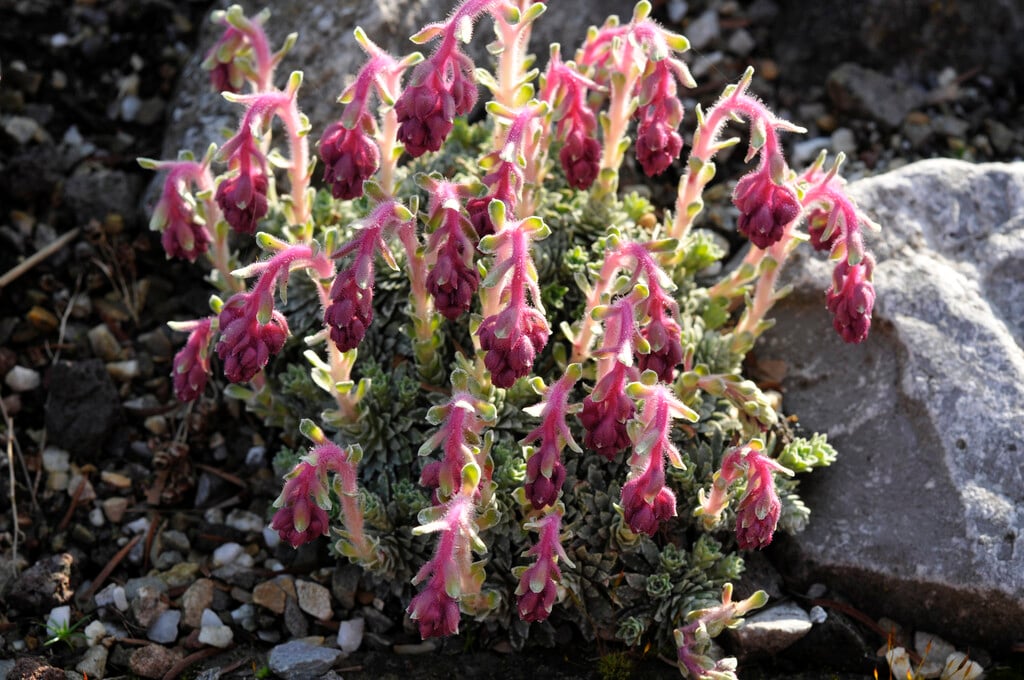Size
Ultimate height
0.1–0.5 metresTime to ultimate height
2–5 yearsUltimate spread
0.1–0.5 metresGrowing conditions
Moisture
Moist but well–drainedpH
Alkaline, NeutralColour & scent
| Stem | Flower | Foliage | Fruit | |
| Spring | Pink Purple | Green Blue Grey Silver | ||
|---|---|---|---|---|
| Summer | Pink Purple | Green Blue Grey Silver | ||
| Autumn | Green Blue Grey Silver | |||
| Winter | Green Blue Grey Silver |
Position
- Full sun
Aspect
South–facing or West–facing
Exposure
Exposed or Sheltered Hardiness
H5Botanical details
- Family
- Saxifragaceae
- Native to GB / Ireland
- No
- Foliage
- Evergreen
- Habit
- Matforming
- Genus
Saxifraga can be annuals, biennials, evergreen or herbaceous perennials, mostly mat-forming in habit, with simple or palmately lobed leaves and starry or rounded flowers which may be solitary of in panicles or cymes
- Name status
Correct
- Horticultural Group
- Porphyrion section saxifrages are compact, cushion or mat-forming evergreen perennials with small, usually lime-encrusted leaves, and 5-petalled white, yellow or pink flowers in early summer
- Plant range
- Bulgaria, N Greece
How to grow
Cultivation
Grow in a sunny spot in moist but very well-drained, alkaline to neutral soil. Keep roots moist in summer but protect from excess winter wet. Ideal for a container or alpine house
Propagation
Propagate by seed, or by division, detaching individual rosettes and rooting as cuttings
Suggested planting locations and garden types
- City and courtyard gardens
- Cottage and informal garden
- Patio and container plants
- Rock garden
- Garden edging
Pruning
No pruning required
Pests
May be susceptible to aphids, slugs, vine weevil, and glasshouse red spider mite
Diseases
Generally disease-free
Get involved
The RHS is the UK’s gardening charity, helping people and plants to grow - nurturing a healthier, happier world, one person and one plant at a time.
